Walleye are a popular fish in Door County and across the Upper Midwest, both to catch and to eat. In this article, we’ll dive into the fascinating world of walleye, a freshwater game fish known for its captivating characteristics and cultural significance. From its distinct physical features to its habitat and feeding habits, we’ll explore the intriguing aspects of a walleye’s life. Discover how walleyes’ adaptability to low-light conditions makes them skilled predators, and learn about their spawning rituals and reproductive cycle. We’ll also delve into its cultural importance as a sought-after species for sport anglers and a delectable delight at fish fries. Join us as we unravel the wonders of the walleye!
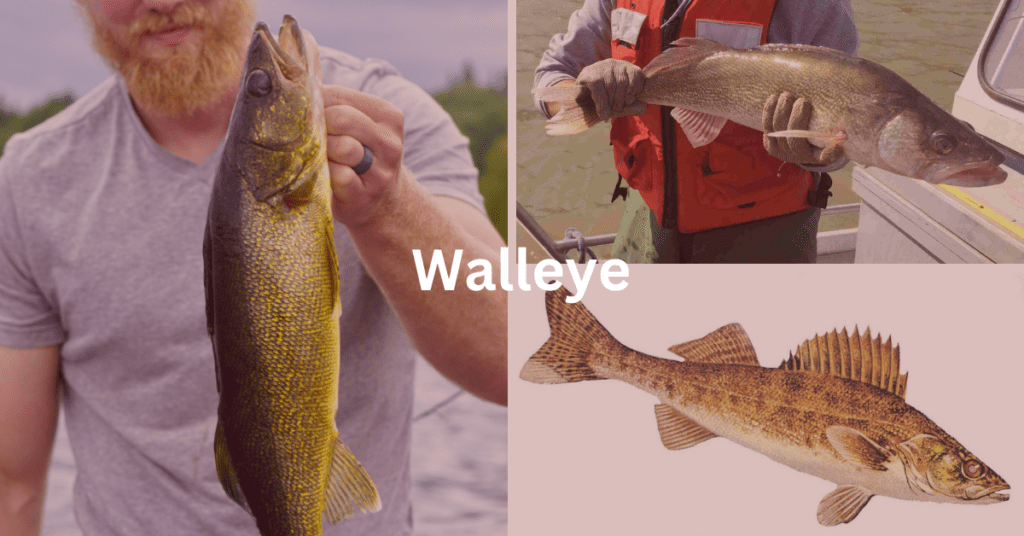
Walleye: General Overview
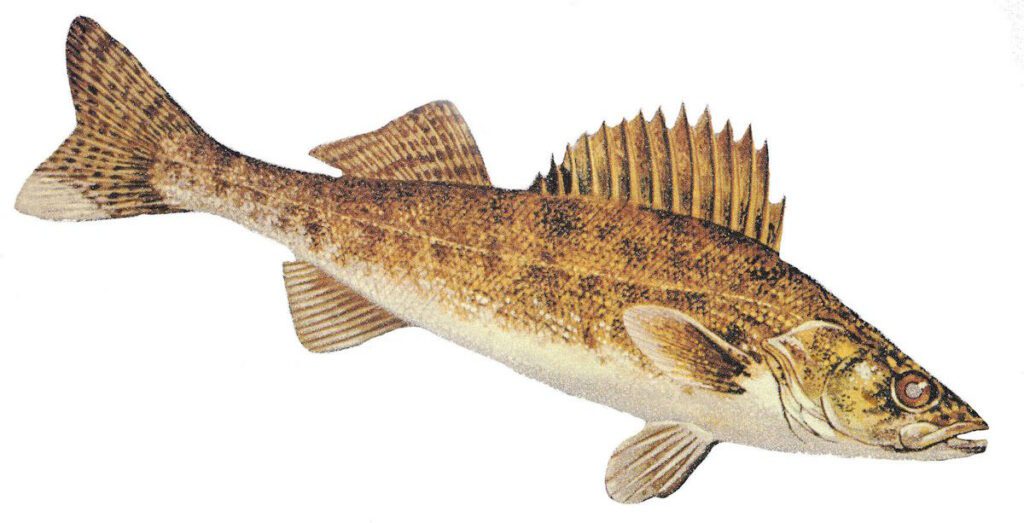
Walleye, scientifically known as Sander vitreus, is a freshwater fish species renowned for its sporting appeal and culinary value. With their distinct physical features, including the characteristic spiny and rayed dorsal fins, sharp teeth, and large dark-colored eyes, walleye exhibit remarkable adaptations for low-light conditions. Found in lakes, rivers, and streams across North America, walleye are prized by sport anglers for their elusive nature and challenging pursuit. Its mild-flavored, white flesh has made it a popular choice for fish fries. Through conservation efforts, walleye populations are managed to ensure sustainable fishing opportunities and protect their habitats.
Scientific Classification of Walleye
- Kingdom: Animalia
- Phylum: Chordata
- Class: Actinopterygii
- Order: Perciformes
- Family: Percidae
- Genus: Sander
- Species: Sander vitreus
Physical Description and Appearance of Walleye
Walleye, a popular freshwater fish, possess distinctive features that set them apart. Let’s delve into their physical description and appearance.
Walleye are long and slender, exhibiting a streamlined body shape that aids in their swift movement through the water. Their coloration typically comprises shades of gold and olive, blending seamlessly with their natural surroundings. The belly of a walleye is characterized by a crisp, white hue, creating a striking contrast against its dorsal region.
One of the most recognizable features of a walleye is the series of distinct black bands adorning its back. These bands, numbering five or more, traverse the length of their body, accentuating their sleek profile. Along the top of their back, walleye possess two dorsal fins, each with its unique characteristics. The first dorsal fin, known as the spiny dorsal fin, is equipped with sharp, rigid spines. The second dorsal fin, called the rayed dorsal fin, comprises soft, flexible rays.

A walleye’s large mouth is particularly noteworthy, capable of engulfing prey with ease. Within their impressive jaws, they sport sharp teeth that aid in capturing and gripping their preferred food sources. Another striking feature of walleye is their eyes. These eyes are relatively large and possess a deep, dark coloration, which enables them to thrive in low-light conditions and enhances their visual acuity in the murky depths they inhabit.
Fully grown adult walleye reach lengths of 2.5 to 3 feet, with some individuals exceeding these measurements. In terms of weight, they can tip the scales at an impressive 10 to 20 pounds or more, depending on their habitat and food availability.
In addition to these physical attributes, walleye exhibit certain characteristics and behaviors that contribute to their remarkable adaptability in freshwater ecosystems. In the following sections, we’ll explore their habitat, feeding habits, and other fascinating aspects of these remarkable fish.
Range and Habitat of Walleye
Walleye, being a freshwater fish, have a broad range and can be found in various habitats across North America. These remarkable creatures have adapted to thrive in cold-water environments and can be encountered in lakes, rivers, and streams throughout their range.
Historically, walleye were primarily distributed in the northern regions of the United States and Canada. However, due to their popularity as a game fish and their excellent table fare, walleye have been extensively stocked in large impoundments and water bodies across the country. This deliberate stocking has expanded their distribution and allowed anglers to enjoy pursuing them in diverse locations.
One of the key factors contributing to the widespread presence of walleye is their adaptability. They display a remarkable ability to inhabit a wide variety of aquatic habitats, thanks to their natural resilience and flexibility. Walleye can be found in deep, clear lakes, as well as shallow, weedy reservoirs. They are equally at home in slow-moving rivers and fast-flowing streams. This adaptability allows them to capitalize on the availability of suitable prey and ensures their survival in different ecological niches.

When it comes to specific habitat preferences, walleye tend to seek areas with structures that provide cover and ambush points. They are often found near submerged vegetation, rocky shorelines, submerged timber, or areas with drop-offs and underwater ledges. These features offer shelter to walleye and serve as ideal hunting grounds, allowing them to surprise their prey.
It is worth noting that walleye exhibit certain preferences based on seasonal changes. During the warmer months, they tend to move to deeper waters, seeking cooler temperatures and actively pursuing their prey. In contrast, during the colder months, they may migrate to shallower areas or move into river systems, where they take advantage of the spawning season.
The adaptability and wide distribution of walleye have made them a sought-after species among anglers and a vital component of many freshwater ecosystems. In the subsequent sections, we’ll explore their feeding habits, reproduction, and the strategies employed by anglers to catch these elusive fish.
Feeding Habits of Walleye
Walleye, with their remarkable adaptations, have developed unique feeding habits that allow them to thrive in various aquatic environments. Their ability to navigate and hunt in low visibility conditions makes them most active during the twilight hours, specifically at night and during dawn and dusk. However, it is worth noting that walleye fishing can still be productive during the day, particularly in turbid water conditions.
One intriguing aspect of walleye feeding behavior is their affinity for what anglers often refer to as the “walleye chop.” Windy and wavy conditions create turbulence on the surface, which in turn stirs up sediments from the bottom of the body of water. This disturbance attracts walleye, as it creates a favorable feeding environment. The stirred-up sediments disorient potential prey, reducing their ability to detect the approaching predator. Therefore, experienced walleye fishermen often keep an eye out for such conditions, knowing that it can increase their chances of a successful catch.
In terms of their diet, walleye are opportunistic predators and exhibit a varied menu. They are known to feed on a wide range of aquatic organisms, adapting their preferences based on availability. Common prey items for walleye include smaller fish species such as yellow perch, minnows, shiners, and even juvenile walleye. They also target invertebrates like crayfish, insects, and worms. This versatility in their diet allows walleye to exploit different food sources within their habitat, maximizing their chances of survival and growth.
Walleye employ an ambush hunting strategy. They patiently lie in wait near structures or areas of cover, utilizing their excellent vision to detect prey movement. Walleye possess a specialized layer of cells in their eyes called the tapetum lucidum, which enhances their ability to see in low-light conditions. This adaptation gives them a distinct advantage during their preferred feeding times when visibility is reduced.
During the spawning season, walleye exhibit a more intense feeding behavior as they prepare for reproduction. They tend to focus on energy-rich prey items to fuel their reproductive efforts. It is important to note that walleye populations can be influenced by changes in the availability of prey species and fluctuations in environmental conditions.
Understanding the feeding habits of walleye is crucial for anglers seeking to catch these prized fish. By employing various fishing techniques and presenting bait or lures that mimic their preferred prey, anglers can increase their chances of enticing a walleye strike. In the following sections, we’ll explore popular fishing techniques and tips for targeting walleye successfully.
Walleye Reproduction
Walleye reproduction follows a fascinating cycle, driven by seasonal cues and specific environmental conditions. Let’s explore the process of walleye reproduction and gain insight into their reproductive strategies.
Walleye typically engage in spawning during the spring months when water temperatures begin to rise. The exact timing of spawning can vary depending on the geographic location and specific water conditions. In some regions, walleye may start their reproductive activities as early as late winter, while in other areas, it may occur in early to mid-spring.
To initiate the spawning process, walleye typically migrate to specific spawning grounds, which are often shallow areas with gravel or rocky substrates. These areas provide suitable conditions for the deposition and fertilization of eggs. During the migration, walleye may travel upstream or move to areas within the same body of water where ideal spawning conditions are present.
Walleye engage in external fertilization, where females release their eggs into the water column, and males simultaneously release their milt (sperm) to fertilize the eggs. This process occurs as the fish engage in a characteristic spawning dance, where they swim together in groups, creating a mesmerizing spectacle.
After fertilization, the buoyant eggs adhere to the substrate and settle into the gaps between rocks or gravel. The adhesive nature of walleye eggs helps to prevent them from being swept away by water currents. The eggs undergo an incubation period that can last anywhere from one to three weeks, depending on water temperature and other environmental factors.
Once the eggs hatch, tiny larval walleye emerge. These larval fish, commonly known as fry, are minuscule and heavily rely on the yolk sac attached to their bodies for nutrition. As they grow and develop, the fry undergo various stages, gradually transitioning into juvenile walleye.
Juvenile walleye exhibit different growth rates and behaviors depending on their habitat and available food sources. They begin to venture out from the safety of the spawning grounds, seeking sheltered areas with abundant food and suitable cover. During this phase, they are particularly vulnerable to predation and rely on their instinctual behaviors and natural camouflage to avoid becoming prey.
As juvenile walleye continue to grow, they gradually assume the physical characteristics and feeding habits of adult walleye. The exact timeframe for reaching sexual maturity can vary, but it typically takes several years for walleye to reach reproductive age.
The reproductive cycle of walleye plays a vital role in sustaining their populations and ensuring their long-term survival. It is important for anglers and fisheries managers to understand and protect the spawning grounds and crucial habitats that support successful reproduction.
In the next section, we’ll delve into popular fishing techniques and strategies employed by anglers to target walleye, taking into account the unique behaviors and preferences of these remarkable fish.
The Cultural Significance of Walleye
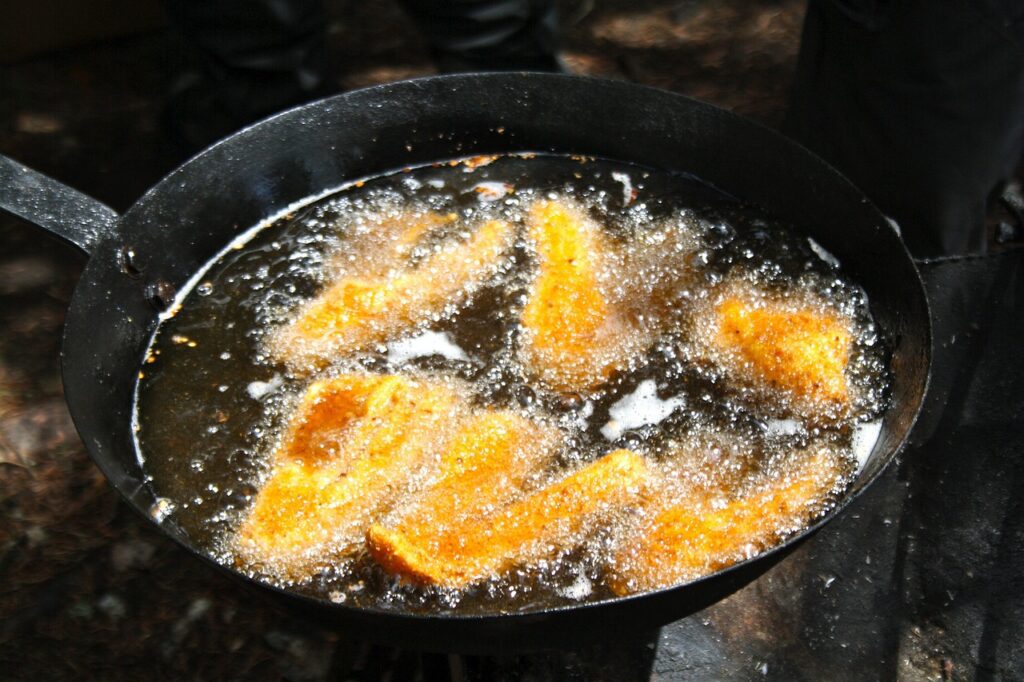
Walleye holds a prominent place in both the world of sport fishing and the culinary traditions of certain regions. Let’s explore the cultural significance of walleye and its importance to sport anglers and local communities.
Walleye fishing is a beloved pastime for sport anglers across North America. Its reputation as a challenging and rewarding game fish has made it a sought-after species for recreational fishing. Anglers are drawn to the thrill of pursuing walleye, testing their skills and knowledge in the quest for a prized catch. The elusive nature of walleye and their keen senses provide an exciting challenge, making them a highly valued target for many fishing enthusiasts.
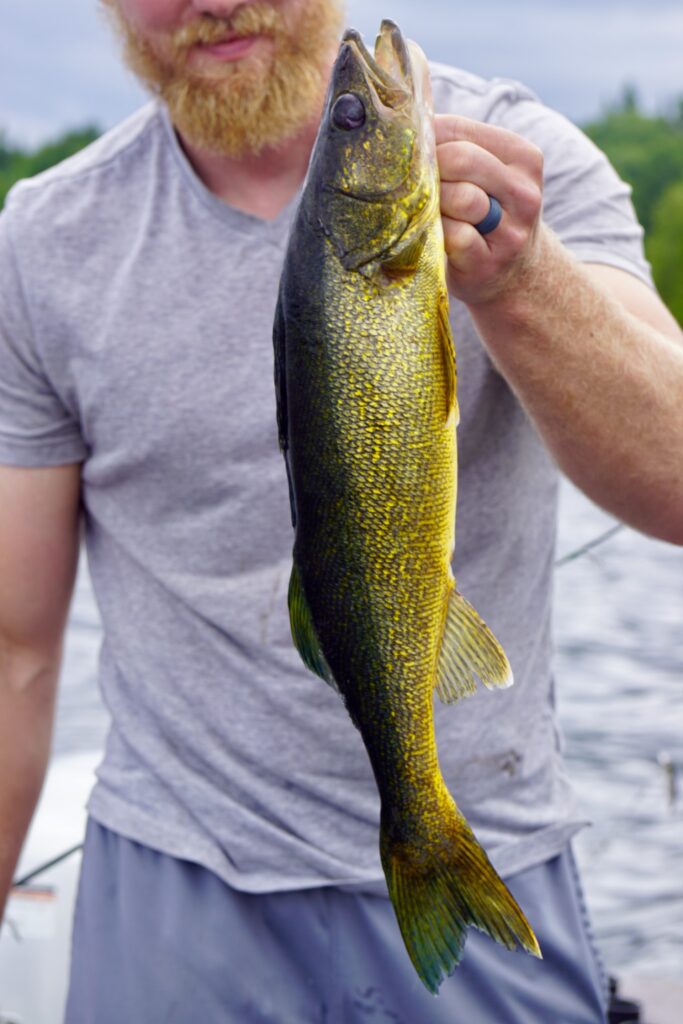
Beyond the sport fishing realm, walleye plays a significant role as a food source, particularly in the Upper Midwest of the United States and Canada. The walleye’s delectable white, flaky flesh has made it a popular choice for culinary purposes. It is highly regarded for its mild flavor and delicate texture, making it a versatile ingredient in various recipes.
Those who are acquainted with the wall-eyed pike as a food fish hold it in very high esteem.
David Starr Jordan and Barton Warren Everman, American Food & Game Fishes, 1902
One notable culinary tradition that celebrates walleye is the fish fry. In the Upper Midwest, particularly in states like Minnesota, Wisconsin, and Michigan, walleye fish fries are a beloved culinary tradition. These events bring communities together, offering an opportunity to savor freshly caught and expertly prepared walleye. Whether it’s the crispy batter-coated fillets or the simplicity of pan-fried walleye with a squeeze of lemon, these fish fries have become iconic gatherings that showcase the local cultural heritage and appreciation for this prized fish.
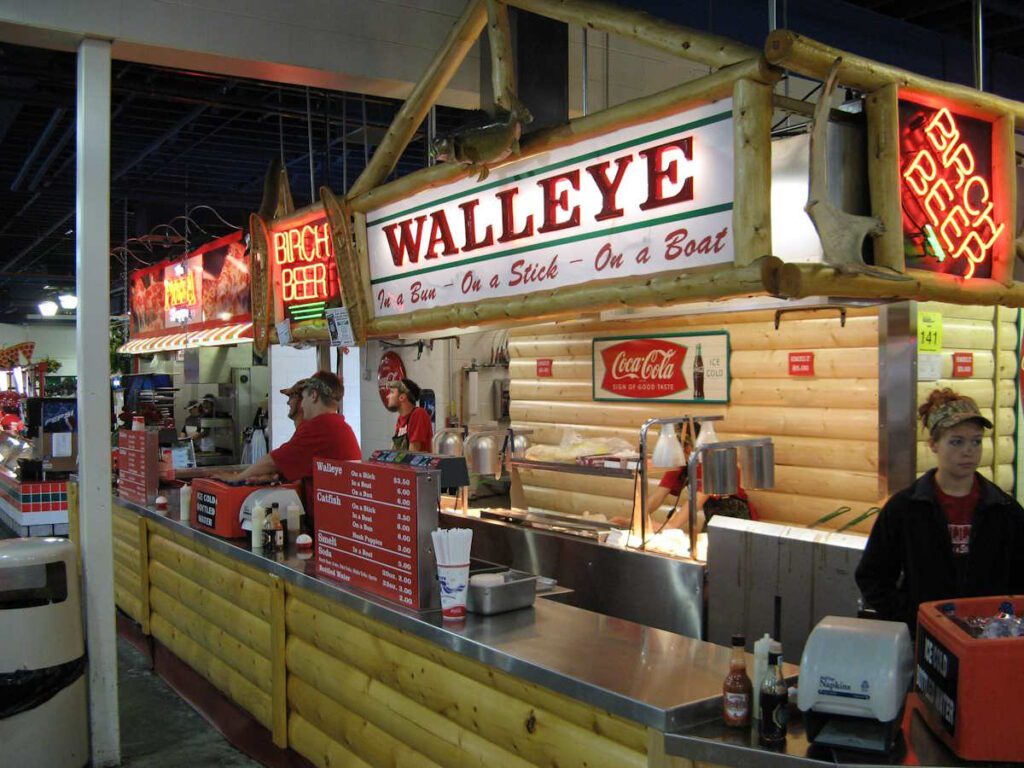
The popularity of walleye as a food source is further enhanced by its versatility in cooking methods. Whether grilled, baked, pan-fried, or incorporated into stews and chowders, walleye’s mild flavor allows it to harmonize with a wide range of ingredients and culinary styles.
Moreover, walleye’s cultural significance extends beyond its role as a sport fish and culinary delight. It serves as a symbol of local identity and regional pride, representing the natural resources and unique traditions of communities where it thrives. Festivals, tournaments, and events centered around walleye highlight its cultural importance and provide opportunities for people to come together, share stories, and celebrate their shared connection to this remarkable species.
In conclusion, walleye holds both recreational and gastronomic significance, captivating sport anglers with its challenging nature and delighting taste buds with its delicious flesh. Its cultural importance as a cherished game fish and a staple food source in the Upper Midwest further solidifies its place in the hearts and traditions of communities where it is revered.
Alternative Names for Walleye:
- Scientific Name: Sander vitreus
- Yellow Walleye
- Yellow Pike
- Pickerel (not to be confused with true pickerels)
- Walleyed Pike
- Glass Eye
- Marble Eye
- Jack Salmon
- Yellow Perch (in some regions, although it is a distinct species)
- Doré (common name in French-speaking regions)
- Walleye Pike
Please note that while some of these names are commonly used to refer to walleye, regional variations and local preferences may result in additional or different alternative names being used.
Conservation Status of Walleye
The conservation status of walleye, also known as Sander vitreus, is generally considered to be stable or of least concern. However, it is important to note that specific regional populations may face localized threats or concerns.
Overall, walleye populations benefit from their widespread distribution across North America and their ability to adapt to various freshwater habitats. The species is often managed through regulations and fishing regulations implemented by wildlife agencies to ensure sustainable populations and maintain healthy ecosystems.
Despite their resilience, walleye populations can be influenced by a combination of factors, including habitat degradation, pollution, overfishing, and the introduction of non-native species. Loss or alteration of spawning habitats, such as the destruction of suitable gravel or rocky substrates, can impact the success of reproduction.
Efforts are made to protect and enhance walleye populations through habitat conservation, water quality management, and the implementation of sustainable fishing practices. Fisheries management agencies work closely with scientists, anglers, and local communities to monitor walleye populations, establish fishing regulations, and promote responsible angling practices.
Conservation initiatives also focus on educating the public about the importance of preserving aquatic ecosystems and the role walleye play within them. Through conservation efforts, it is possible to ensure the long-term viability of walleye populations and maintain their ecological and cultural significance.
It is worth noting that the conservation status of walleye may vary across different regions, and it is essential to consider local management strategies and regulations when engaging in walleye fishing activities.
By promoting sustainable practices, protecting critical habitats, and fostering responsible stewardship, we can contribute to the continued conservation of walleye and the preservation of their valuable contributions to aquatic ecosystems and recreational pursuits.
Walleye: Summary
- Walleye (Sander vitreus) is a popular freshwater game fish known for its sporting appeal and culinary value.
- They have a long and slender body, gold and olive coloring with a white belly, and distinct black bands on their back.
- Walleye are found in lakes, rivers, and streams, primarily in northern United States and Canada, but also stocked in large impoundments.
- They are adapted for feeding in low visibility conditions, making them most active at night and during dawn and dusk.
- Walleye are opportunistic predators, feeding on smaller fish, invertebrates, and various prey species available in their habitat.
- They engage in external fertilization and spawn in shallow areas with gravel or rocky substrates during the spring months.
- Walleye hold cultural significance as a popular target for sport anglers and a staple food source in the Upper Midwest.
- The species is generally considered stable, but local populations can be affected by habitat degradation, pollution, and overfishing.
- Conservation efforts aim to protect walleye populations, manage fishing regulations, and promote sustainable practices for their long-term survival.
- By understanding the physical characteristics, habitat, feeding habits, reproduction, and cultural importance of walleye, we can deepen our appreciation for this remarkable fish.

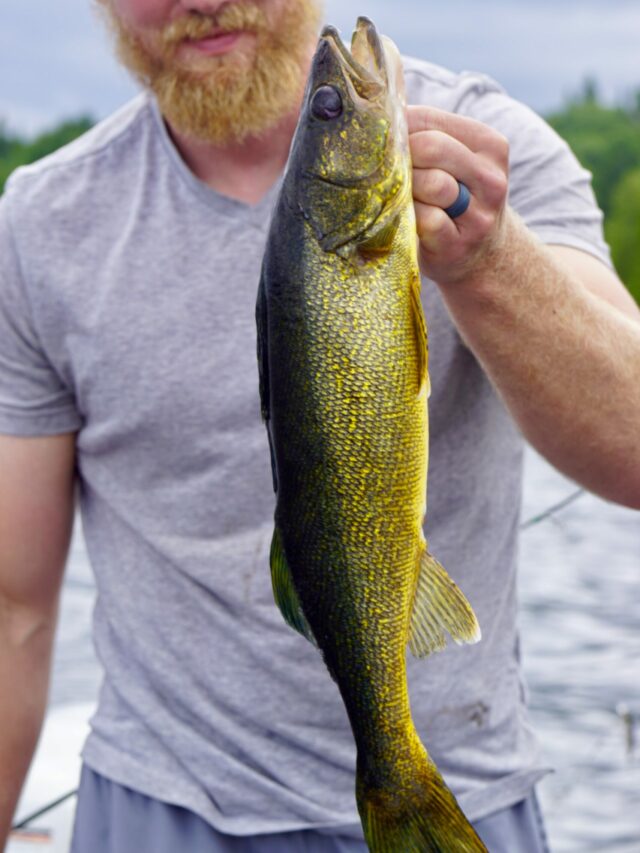
What size are Walleye typically stocked?
It seems that ‘fingerling’ Walleye stocked, are mostly eaten up by Bass, Northerns, & Musky before they reach maturity or legal size for a meal.
Hi, Greg,
It’s hard to say what a “typical” stocking size is for walleye, as what’s best for each pond is going to be different based on circumstances. But, you’re right: threats from other predator fish can be a big problem. To help mitigate threats from predators like bass, it’s best to cull down their population before stocking and to also stock larger walleye. Hopefully that combination will let larger numbers of walleye reach maturity.
Here’s to your walleye raising success!